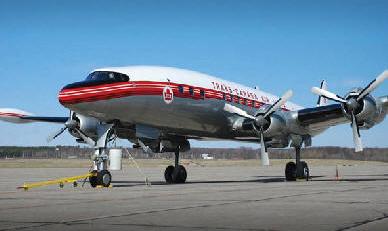
NEWSROOM
 |
NEWSROOM |
|
|
|
|
|||
|
By Mike Mitchell |
||||
 |
December 28, 2009 - With its curvaceous fuselage and triple tail, the
Lockheed Super-G Constellation is one of the most distinctive airliners
in history. The Museum of Flight took delivery of its rare "Connie" in
September 2009. The story of this aircraft will be told in a January 9th
program by Bob Bogash, Museum volunteer and retired Boeing engineer, who
was instrumental in the plane's acquisition, restoration and
transportation to the Museum.
The presentation will be illustrated with previously unpublished
photographs. Randomly-selected members of the audience will be chosen
for an exclusive tour of the aircraft on January 16th. The
program is at 2 p.m. in the |
|||
|
The |
||||
|
Bogash has helped The Museum of Flight with the acquisition of its
Boeing 727, 737 and 747 prototypes, a de Havilland Comet 4C, a NASA
F-104, a Boeing B-52 bomber, a Douglas A-4 Skyhawk flown by the Blue
Angels, and a British Airways Concorde.
An icon of the days of piston-powered luxury transportation, the Super-G
Constellation is one of the crown jewels in the Museum's collection of
commercial airplanes. It was built in 1954 and delivered that year to
Air
Design of the Constellation began in 1939 for Trans World Airlines,
under the leadership of TWA president Jack Frye and financier Howard
Hughes. The Constellation design team at Lockheed included the legendary
engineer, Clarence "Kelly" Johnson. Johnson played key roles designing
over 40 aircraft, including some significant planes in Museum's
collection--the P-38 Lightning, F-104 Starfighter, Jetstar and
Blackbird.
The revolutionary, pressurized airliner was diverted for military
service during World War II, and entered the civilian transportation
business after the War. Over 800 of the sleek aircraft were built until
production ended in 1958. With Trans-Canada Air Lines livery, the
Museum's Constellation is slated to be on permanent, public display in
2010. |
||||
|
The |
| ?AvStop Online Magazine Contact Us Return To News |
|